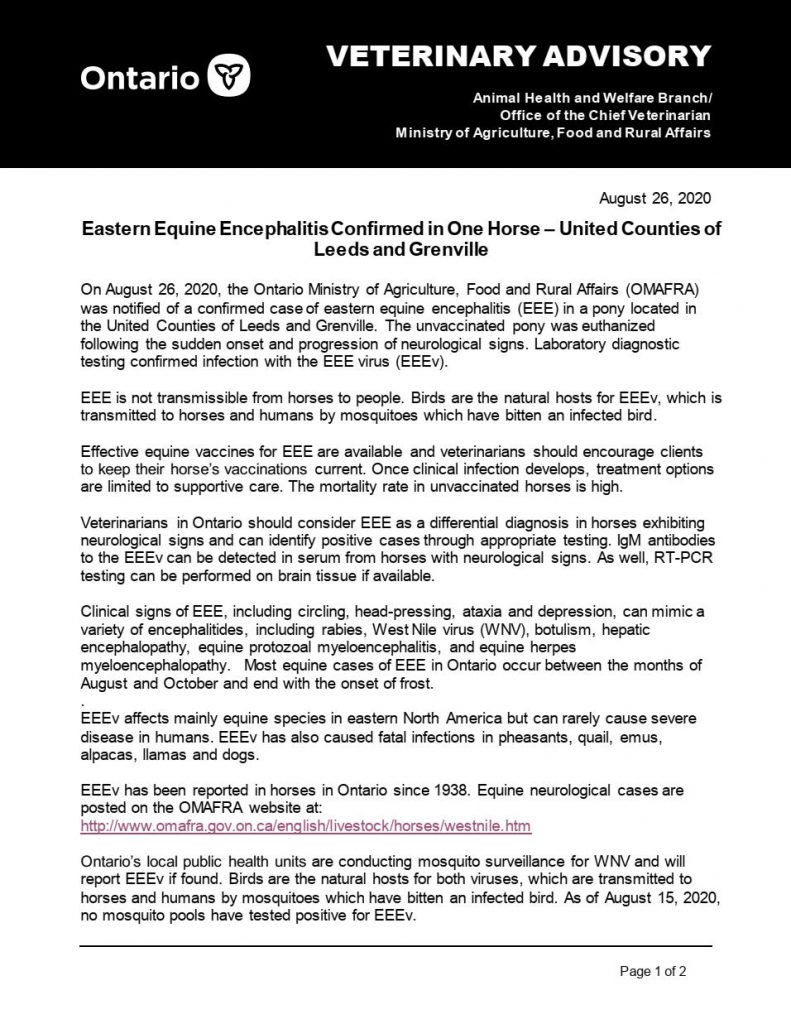Disease Advisory from OMAFRA on Eastern Equine Encephalitis in Ontario
Excerpt from OMAFRA Veterinary Advisory August 27, 2020. Please see attached PDF at bottom of the page for the full report. You can also easily share the report to your social channels via the .jpeg images attached, or on our OAHN social feeds.
“On August 26, 2020, the Ontario Ministry of Agriculture, Food and Rural Affairs (OMAFRA) was notified of a confirmed case of eastern equine encephalitis (EEE) in a pony located in the United Counties of Leeds and Grenville. The unvaccinated pony was euthanized
following the sudden onset and progression of neurological signs. Laboratory diagnostic testing confirmed infection with the EEE virus (EEEv).
EEE is not transmissible from horses to people. Birds are the natural hosts for EEEv, which is transmitted to horses and humans by mosquitoes which have bitten an infected bird.
Effective equine vaccines for EEE are available and veterinarians should encourage clients to keep their horse’s vaccinations current. Once clinical infection develops, treatment options are limited to supportive care. The mortality rate in unvaccinated horses is high.
Veterinarians in Ontario should consider EEE as a differential diagnosis in horses exhibiting neurological signs and can identify positive cases through appropriate testing. IgM antibodies to the EEEv can be detected in serum from horses with neurological signs. As well, RT-PCR testing can be performed on brain tissue if available.
Clinical signs of EEE, including circling, head-pressing, ataxia and depression, can mimic a variety of encephalitides, including rabies, West Nile virus (WNV), botulism, hepatic encephalopathy, equine protozoal myeloencephalitis, and equine herpes myeloencephalopathy. Most equine cases of EEE in Ontario occur between the months of August and October and end with the onset of frost.
.
EEEv affects mainly equine species in eastern North America but can rarely cause severe disease in humans. EEEv has also caused fatal infections in pheasants, quail, emus, alpacas, llamas and dogs.
EEEv has been reported in horses in Ontario since 1938. Equine neurological cases are posted on the OMAFRA website at:
http://www.omafra.gov.on.ca/english/livestock/horses/westnile.htm”
JPEG (shareable on social media) file here, or PDF below.


To download the PDF, click here: Veterinary Advisory – Eastern Equine Encephalitis 2020-08-26

